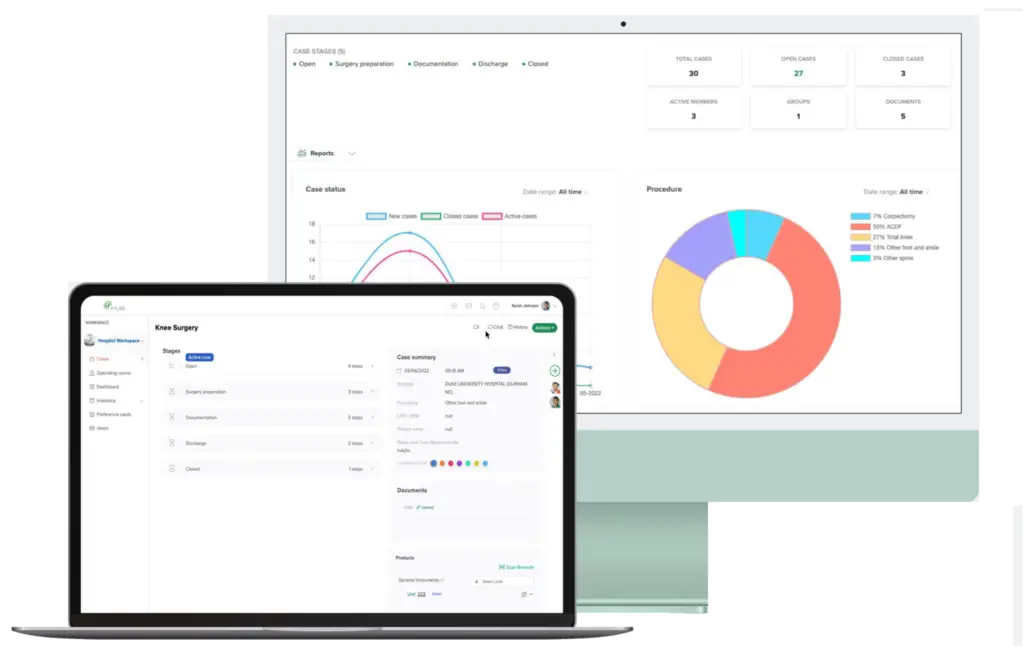In the fast-paced environment of ambulatory surgery centers (ASCs), efficiency is not just a goal—it’s a necessity. Coordinators and administrators are pivotal in ensuring that these facilities operate smoothly, providing top-notch care while optimizing resources. This guide explores key strategies to help you achieve maximum efficiencies in your ASC, enhancing both patient outcomes and operational performance.
The Importance of Efficiency in ASCs
Efficiency in ASCs translates directly to improved patient care, reduced costs, and enhanced staff productivity. By streamlining processes, you can minimize downtime, avoid scheduling conflicts, and ensure that every team member operates at their full potential. Here’s how to achieve this.
1. Streamline Communication
Enhance Inter-Departmental Coordination
Effective communication is the backbone of any efficient ASC. Implementing a robust communication platform can bridge gaps between departments, ensuring that everyone is on the same page.
- Use Integrated Software: Platforms like HUB Healthcare offer integrated communication tools that allow for seamless information exchange among staff, reducing misunderstandings and delays.
- Automated Notifications: Implement automated reminders for staff and patients to ensure everyone is aware of upcoming procedures and tasks.
Foster a Culture of Open Communication
Encourage open communication among your team. Regular meetings and feedback sessions can help identify and resolve inefficiencies.
2. Optimize Scheduling
Implement Advanced Scheduling Tools
Advanced scheduling tools can significantly reduce patient wait times and eliminate scheduling conflicts.
- Dynamic Scheduling Software: Use software that adapts to changes in real-time, ensuring that all slots are utilized efficiently.
- Predictive Analytics: Employ predictive analytics to forecast patient volume and adjust staffing levels accordingly.
Reduce Cancellations
Cancellations can be costly and disruptive. Implement strategies to minimize them.
- Pre-Surgical Assessments: Conduct thorough pre-surgical assessments to identify potential issues that could lead to cancellations.
- Patient Reminders: Use automated systems to send reminders to patients about their upcoming appointments and required preparations.
3. Enhance Inventory Management
Use a Centralized Inventory System
A centralized inventory system helps track medical supplies and ensures that you always have the necessary items on hand without overstocking.
- Real-Time Tracking: Implement real-time tracking of inventory levels to avoid shortages or excesses.
- Automated Reordering: Set up automated reordering systems for critical supplies to ensure they are always available.
Standardize Supplies
Standardizing supplies can reduce costs and simplify inventory management.
- Supplier Contracts: Establish contracts with suppliers for bulk purchases to benefit from discounts.
- Preference Cards: Use surgical preference cards to standardize the supplies needed for common procedures.
4. Leverage Technology for Workflow Optimization
Adopt Workflow Management Software
Workflow management software can streamline administrative tasks and reduce manual work.
- Task Automation: Automate routine tasks such as patient check-ins, billing, and documentation.
- Electronic Health Records (EHR): Use EHR systems to maintain accurate and up-to-date patient records, accessible to all relevant staff.
Improve Data Security
Data security is crucial in healthcare. Ensure your systems are secure to protect patient information.
- Encryption: Use encryption to safeguard data.
- Regular Audits: Conduct regular security audits to identify and address vulnerabilities.
5. Focus on Staff Training and Development
Continuous Education
Invest in ongoing training and development programs for your staff.
- Regular Training Sessions: Hold regular training sessions to keep staff updated on the latest best practices and technologies.
- Certification Programs: Encourage staff to pursue certifications that enhance their skills and knowledge.
Cross-Training
Cross-training staff can improve flexibility and ensure that all areas are adequately covered, even during absences.
- Multi-Skilled Workforce: Develop a multi-skilled workforce that can adapt to various roles as needed.
- Backup Plans: Create backup plans to cover critical positions during unexpected absences.
Conclusion: Achieving Maximum Efficiency in ASCs
Maximizing efficiency in your ASC involves a combination of advanced technology, streamlined processes, and a proactive approach to communication and training. By implementing these strategies, coordinators and administrators can ensure that their facilities operate at peak performance, providing high-quality care while optimizing resources.
How HUB Healthcare Can Help
HUB Healthcare offers a comprehensive solution designed to ensure HIPAA-compliant communication in healthcare settings. With features such as secure messaging, encrypted document management, and detailed audit trails, HUB Healthcare provides the necessary tools to protect patient information and comply with HIPAA regulations. By leveraging HUB Healthcare’s robust platform, healthcare organizations can facilitate secure and efficient communication, ultimately improving patient care and operational efficiency.
Call to Action
Ready to transform your ASC’s efficiency? Explore HUB Healthcare’s comprehensive solutions designed to streamline your operations and enhance patient care. Contact us today to learn more and schedule a demo. Care coordination







